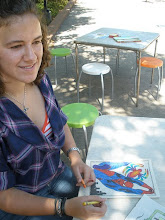The Dong article makes many good points about the importance of not only incorporating multicultural literature into the reading list, but also changing the way literature is taught. The issue of how to read, understand, and discuss multicultural literature has been important in both this and my other classes. Books like Copper Sun and Esperanza Rising present perspectives that are not usually found in many middle or high school classrooms.
Some answers as to why this might be are found in the article. One reason is that teachers tend to teach books they are familiar with. Most of the books in high school curriculums have been there for many years. Teachers tend to be more comfortable teaching material they were taught during their secondary education. With the introduction of new material, teachers are entering unknown territory and may have some doubts. As Dong points out, some teachers “wonder whether their students can handle racial and cultural issues with maturity and respect. They are afraid that the racial tension imbued in these works may divide rather than unite a class whose students are increasingly culturally and linguistically diverse.” Teachers don’t want to take the risk that conversations might be less than smooth and easy. They underestimate their students when they assume that they can’t handle more mature topics. However, adolescents benefit from reading literature by a variety of authors from different backgrounds. Multicultural literature exposes readers to new ways of thinking about history as well as the modern world.
In my Ethnic American Literature class, English 353, we’ve been reading from an anthology of Native American women’s poetry and short stories. This anthology provides a new perspective that we are unaccustomed to reading. In the same way, Copper Sun gives a young African’s point of view of the slave trade. Esperanza Rising provides the perspective of a young woman being forced to leave the comfort of her home in Mexico to come work in the United States. Both novels give us two different and enlightening views of our own country. By reading multicultural literature, we become aware of the views of people who are different from us. The knowledge we receive about differing perspectives can help us relate to people in our own society.

I would agree that the introduction of more multicultural literature into the classroom can provide some benefits to the readers in the form of different perspectives and ways of thinking; however, I do think that the issue of students handling these works with maturity and respect that could prove to divide rather than unite a group is reason for concern. A good amount of preparation must be done by the teacher in order to present these works paying special consideration to any issues that may arise from the cultural views of the work due to the demographic of the class or group. In some cases, students may not be able to handle new multicultural material being brought into the classroom setting. It would be a mistake to simply "underestimate" the students, but when careful consideration is done and the conclusion, based on evidence, that a particular group is not ready for any particular work of literature is found than it is justified to not include that piece in curriculum.
ReplyDelete